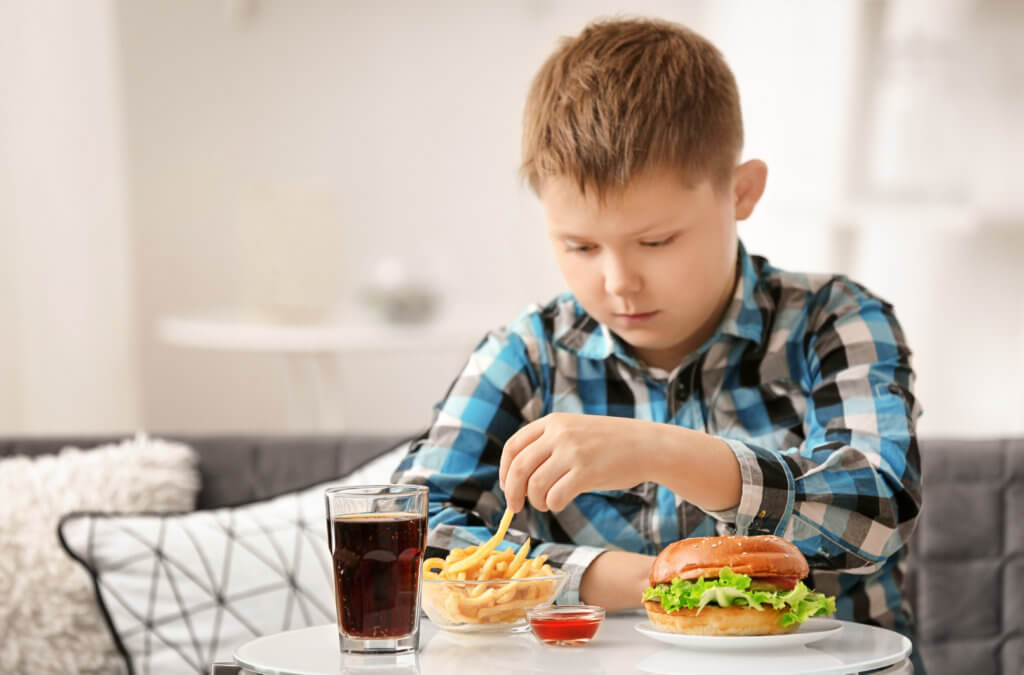MADRID — Parents, beware: those colorful, convenient packaged snacks and sugary drinks your kids love could be setting them up for serious health problems down the road. A new study published in JAMA Network Open shows that high consumption of ultra-processed foods in young children is linked to increased body fat, higher blood sugar levels, and lower “good” cholesterol – all risk factors for heart disease and diabetes later in life.
So, what exactly are ultra-processed foods? They’re the packaged products that make up an increasingly large part of the modern diet, especially for kids. We’re talking about things like sweetened breakfast cereals, soft drinks, chicken nuggets, fries, candy, cookies, and ice cream. Basically, if it comes in a package with a long list of ingredients you can’t pronounce, it’s probably ultra-processed.
These foods go through extensive industrial processing and are loaded with added sugar, salt, oils, and fats. What they’re lacking is fiber and essential nutrients. While you may have heard about avoiding processed foods before, the term “ultra-processed” takes it to a whole new level. It’s a classification system called NOVA that looks at the nature, extent and purpose of food processing.
To understand what makes ultra-processed foods different, let’s look at an example – apples. A fresh, whole apple would be considered “unprocessed.” Unsweetened apple sauce with just apples and maybe some water or lemon juice would be “processed.” But an individual package of cinnamon apple sauce with added sugar and preservatives would land in the “ultra-processed” category.
The researchers behind this new study looked at the eating habits of nearly 1,500 children between the ages of three and six across Spain. They estimated their usual intake of ultra-processed foods using detailed food frequency questionnaires completed by parents. Then they measured the kids’ body fat, waist size, blood sugar, insulin, and cholesterol to look for associations.
The results were alarming. Children who ate the highest amounts of ultra-processed foods had significantly higher body mass index (BMI), total body fat, and waist circumference compared to kids who ate the least. They also had higher fasting blood sugar levels and lower levels of HDL (“good”) cholesterol. These associations held true even after accounting for factors like physical activity and mom’s education level.

How much is too much when it comes to ultra-processed foods? In this study, the one-third of kids eating the most were getting around 600 grams per day on average (over 21 ounces). The lowest consumers averaged 193 grams daily (about 7 ounces). Every 100-gram (3.5 ounces) increase in daily ultra-processed food intake was linked to higher body fat and blood sugar and lower good cholesterol.
The researchers estimate that simply replacing about 3.5 ounces of ultra-processed foods per day with unprocessed or minimally processed alternatives could make a significant difference in kids’ body fat and blood sugar levels over time. That could be as simple as swapping out a sugary granola bar for a piece of fresh fruit, or choosing plain yogurt with fresh berries instead of the individual, sweetened cups with candy toppings.
Of course, completely avoiding ultra-processed foods is practically impossible in today’s world, and treating them like forbidden fruit may only make them more appealing to kids. The key seems to be minimizing intake as much as possible and saving it for truly special occasions rather than everyday snacks and meals.
These findings add to a growing body of research linking ultra-processed foods to chronic health problems. Prior studies in adults have connected high intake to increased risk of obesity, diabetes, heart disease, and even early death. However, few studies have focused specifically on the health impacts for young children.
Since dietary preferences and habits start forming at a very young age, early childhood is a critical time for shaping long-term health. Taste preferences for foods high in sugar and salt can develop in infancy and toddlerhood. Kids who get used to the hyper-palatable tastes of ultra-processed foods may have a harder time accepting the more subtle, natural flavors of unprocessed foods like plain vegetables, whole grains, and fresh fruit.
While occasional treats are fine, relying on ultra-processed convenience foods too often could set kids on the path to “picky eating” and make it harder to foster healthy habits. Child nutrition experts often recommend the “80/20” rule as a realistic goal: aim to make healthy, unprocessed choices about 80 percent of the time and leave some room for less healthy options up to 20 percent of the time.
The highly processed nature of modern “kid-friendly” foods is a societal problem that goes beyond individual choices. Families are busier than ever, and ultra-processed foods are cheap, widely available, and heavily marketed, especially to children. Cartoon characters beckon from brightly colored packages, and fast food chains target kids with flashy giveaways.

To make real progress, experts say we need policy solutions like tighter regulations on junk food advertising to kids, subsidies for healthier foods, improved nutrition standards for school meals, and clear front-of-package labeling. Chile’s strict junk food marketing and labeling laws ban icons like Tony the Tiger and bright colors on cereal boxes and require warning labels on packaged foods high in sugar, salt, or fat. A few years after these changes were implemented, the consumption of unhealthy “high-in” foods and drinks fell significantly.
In the meantime, parents can focus on stocking the fridge and pantry with mostly unprocessed staples and saving ultra-processed foods for occasional treats. Getting kids involved in cooking simple recipes from scratch and pairing less-liked foods with more-liked ones (think apple slices with a dab of nut butter) can help make minimally processed foods more appealing. Since kids often need to try a new food many times before they accept it, gentle persistence is key.
The findings are clear: ultra-processed foods spell trouble for kids’ health. Shifting to a less processed diet takes effort in today’s food culture. But for families, the long-term payoff of lower chronic disease risk is worth it.
“These findings highlight the need for public health initiatives to promote the replacement of UPFs with unprocessed or minimally processed foods,” the study authors conclude in a media release.
StudyFinds Editor-in-Chief Steve Fink contributed to this report.
